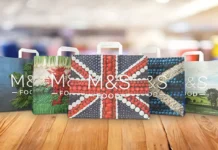
A rise in pet ownership has pet food brands wagging their tails. Here, Howard Wright, executive creative & strategy director, UK, IE & Australia, Equator Design, discusses the packaging trends they should know about.
Whilst in the midst of multiple lockdowns, millions of households around the world satisfied a yearning for reassurance and connection by acquiring a pet. Fast forward nearly three years, and today the mammoth increase in the number of pets being looked after, combined with an increased focus on personalisation and choice driven by online sales and social media, suggests a ‘golden age’ in pet food innovation.
Globally, the pet food market is projected to grow substantially – from £115.50 billion in 2022 to £163.70 billion by 2029, with a compound annual growth rate of 5.11%. Meanwhile, recent estimations have placed an approximate value of £16.07 billion for the pet food packaging market by the year 2032.
Brands looking to align pet food packaging strategies with today’s overarching trends will certainly want pet humanisation and sustainability on their radar. And if we momentarily zoom in on pet humanisation, we can see this is a rising trend creating offshoots of great momentum in sub-sectors such as pet box subscriptions, fresh food, and pet health and wellness.
The preferences of today’s pet owners are driving pet food to be healthier, fresher, better for the planet, and with more appealing, informative, and sustainable packaging.
Subscription boxes
Subscription boxes combine the virtues of convenience with personalisation, helping pet owners meet their pet’s specific nutritional needs while saving them repeated trips to their local pet store or supermarket.
Personalisation underpins the experience, with bespoke meal planning, a selection of packaging formats (with some brands offering reusable starter kits with refills) and a choice of delivery frequency.
In terms of packaging, the model demands formats that are adequately robust and able to stand up to sometimes heavy-handed shipping and handling. The steady humanisation of pets has fostered a steady drive towards high quality packaging.
Many subscription box services are opting for recyclable or compostable packaging options, aligning with pet owners’ desires to reduce their carbon footprint. Additionally, there’s a focus on innovative and functional packaging designs, ensuring freshness and portion control while enhancing the overall user experience.
Fresh food
With many of today’s pet parents keen to see their own food values reflected in what they buy for their pet, fresh pet food is rocketing in popularity.
In a very unforced and natural way, this is driving growth in more pet food packaging with a more natural look and feel. Pet owners are increasingly conscious of the environmental impact of their purchasing decisions, extending this awareness to the packaging of their pets’ food. As a result, there is a growing trend towards utilising natural materials for pet food packaging, such as biodegradable and compostable options.
Brands are exploring innovative packaging made from plant-based materials, such as cornstarch or sugarcane fibres, to reduce reliance on traditional plastics. Additionally, there’s a push for packaging designs that prioritise recyclability and use minimal materials to further minimise the ecological footprint.
Labelling
As the range of pet foods available grows exponentially, alongside this grows the customer’s need for accurate information about the product and its use.
The clear benefit of unambiguous, consistent, and more standardised labelling on pet food products is the potential to bolster trust. Thus, this should encourage brands to focus on how and where they convey information on their pack fronts so as to meet customers’ needs as best they can.
Post-consumer recycling instructions are one aspect of labelling that merits special mention. Interesting research from Amcor recently revealed customers take more notice of tangible impacts, such as recyclability, as opposed to other sustainability considerations such as carbon footprint or water usage.
In the study, German pet owners were shown four dog food packages. Just 17% selected the packaging that displayed low water usage and CO2 logos; however, a majority (over 63%) checked on-pack instructions to ensure their empty pet food pack would be recycled appropriately.
Awareness of the key drivers affecting purchase preference and customer behaviour should then inform packaging. This means encouraging brands to give prominence to recyclability information, if we are looking to launch our product with this particular group of pet owners in mind. This embodies a truism, however, in that a strong understanding of the customer leads to more effective packaging overall.
In our eyes, however, this is not just a throwaway statement – keeping apace of the latest trends and shifts in customer behaviour really is worth its weight in gold.












